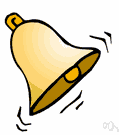

Poe, in addition to the aforementioned sound devices, uses internal rhyme, line length, varied meter, and punctuation to create an imitative bell rhythm. Rhythm and Meter: More than any other poetic device, it’s the rhythm of “The Bells” that makes it lyrical. Repetition: “bells,” “keeping time, time, time / In a sort of rhunic rhyme,” “shriek, shriek,” “higher, higher, higher,” tolling, tolling, tolling,” “swells,” and many more

Onomatopoeia: “tinkle, tinkle, tinkle” (4), “tintinnabulation (11), “jingling and the tinkling” (14), “How they ring out their delight” (19), “To the swinging and the ringing” (31), “shriek, shriek” (42), “By the twanging / and the clanging” (58-59), “In the jangling / and the wrangling” (62-63), “the clamor and the clangor” (69)Īlliteration: “Runic rhyme,” “sounding cells” (II, 11), “What a tale of terror, now, their turbulence tells (III, 3), “frantic fire” (III, 10), “desperate desire” (III, 12), “now to sit or never” (III, 14), “What a tale their terror tells” (III, 16), “clang and clash” (18), “melancholy menace” (IV, 6), “muffled monotone” (IV, 26), “human heart” (IV, 28)Īssonance: “sledges, bells” (I, 1), “merriment their melody foretells” (I, 3), “icy air of night” (I, 5), “crystalline delight” (I, 8), “tintinnabulation” (I, 11), “jingling and the tinkling” (I, 14), “mellow wedding bells” (II, 1), “molten-golden notes” (II, 6), “liquid ditty” (II, 8) “What a gush of euphony voluminously wells” (II, 14), “pale-faced” (III, 15), “silence of the light” (IV, 4), “melancholy menace” (IV, 6), “glory…rolling” (IV, 15), Let us, therefore, begin our journey with examples of onomatopoeia, internal rhyme, alliteration, assonance, and consonance. A literary analysis of “The Bells” by Edgar Allan Poe demonstrates the mastery of sound devices and creates a sensory extravaganza.


 0 kommentar(er)
0 kommentar(er)
